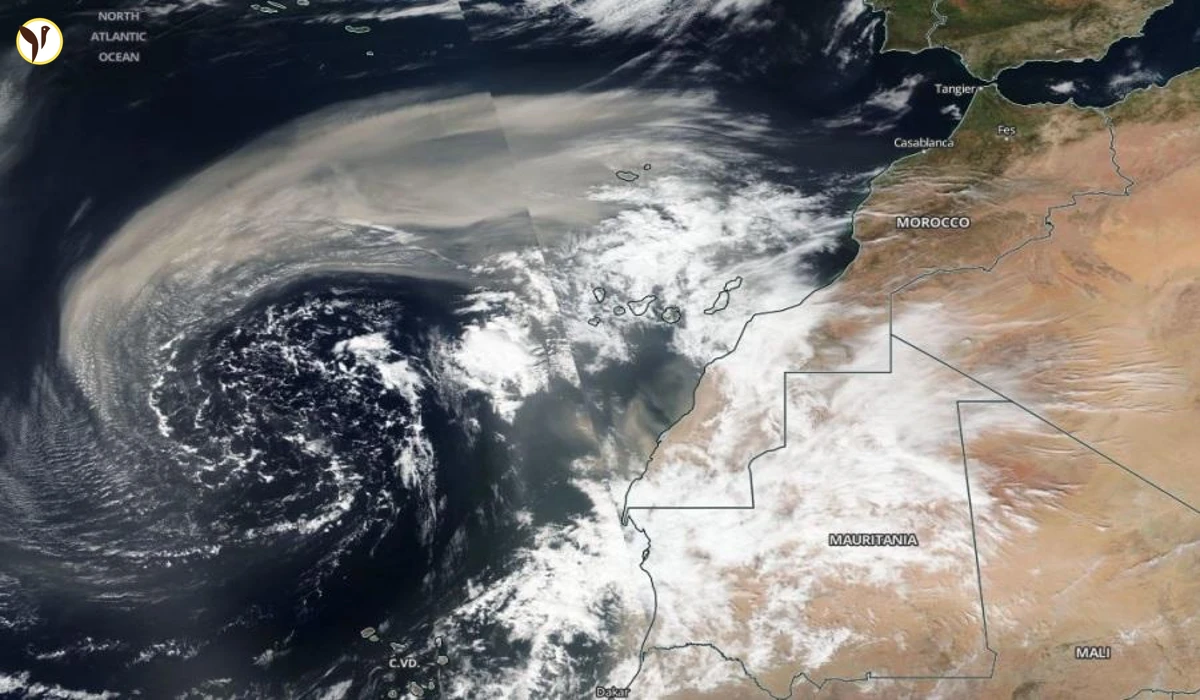A Desert Storm Sweeps Across Europe
Imagine a wall of sand, miles wide, stretching across the Atlantic. That's what happened recently, as a massive "Calima" sandstorm, originating from the Moroccan desert, blew across the Canary Islands and into southwestern Europe. This wasn't just any sandstorm; satellite images captured its breathtaking scale, showing swirling bands of sand caught in a low-pressure system. While the storm is now weakening, its effects will likely linger into the weekend.
The Calima's Journey and Impact
Satellite imagery from February 24th revealed a truly spectacular sight: layer upon layer of sand, visibly sucked into the cyclonic bands of the low-pressure system. The GOES-East geocolor satellite showed the low-pressure system swirling southwest of the Cape Verde Islands, off the coast of Northwest Africa. The sheer volume of sand was incredible; images show an extraordinarily thick layer of dust darkening the skies.
The Canary Islands bore the brunt of the storm initially, with some areas experiencing truly historic levels of particulate matter. Data from Santa Cruz de Tenerife showed three consecutive days of extreme sand blasts; PM10 levels soared past 3500 μg/m³, far exceeding safe limits.
- Witness Accounts: Social media was flooded with images and accounts of the dramatic conditions, with people describing the biggest Calima in years.
- Visual Evidence: NASA's GEOS-5 animation showed a powerful visualization of the dust storm's progression across the Canary Islands and towards the Iberian Peninsula.
Meanwhile, on the mainland, while the Calima dominated headlines, another significant event unfolded: wildfires in Gran Canaria. Fortunately, these fires were brought under control with the assistance of 176 military personnel deployed to aid in the fire-fighting efforts.
| Location | Impact | Status |
|---|---|---|
| Canary Islands | Extreme sandstorms, significant air quality issues | Storm weakening, but effects lingering |
| Gran Canaria | Wildfires | Under control |
| Iberian Peninsula | Sandstorm impact expected to continue | Monitoring in progress |
Recent Incidents in Seville and Surrounding Areas
While the Calima dominated much of the recent news, several other significant events have impacted the region. In Seville, a fire in an underground car park caused significant damage. The blaze, believed to have started from an electric car charging in the building, spread to several other vehicles. Although thankfully no injuries were reported, the incident highlighted the potential dangers associated with electric vehicle charging, especially in enclosed spaces.
Earlier this year, several incidents involving fires damaged religious statues during Holy Week processions. In at least three separate instances, candles and potentially an electrical short circuit led to damage to revered carvings of the Virgin Mary. While these fires were thankfully contained, they serve as a reminder of the unpredictable nature of such events.
Conclusion
The recent events in and around Seville highlight both the dramatic forces of nature and the everyday challenges of modern life. From the awe-inspiring – yet dangerous – Calima sandstorm to the localized challenges of wildfires and the unexpected fires damaging religious artifacts and the damage in a car park, these incidents remind us of the vulnerability of our communities. The impact of these events underscores the importance of preparedness, effective emergency response, and careful attention to safety precautions. The unpredictable nature of these events necessitates constant vigilance and the ongoing work to mitigate potential risks to the public and cultural heritage.


/content/stories/thumb/thumb691d8a15dd6d49.24801741.webp)
/content/stories/thumb/thumb691d677e3e1493.00714451.webp)
/content/stories/thumb/thumb691d6869b1f544.98277568.webp)
/content/stories/thumb/thumb691d5a7995a377.09771198.webp)
/content/stories/thumb/thumb691c6883320f32.63242210.webp)


